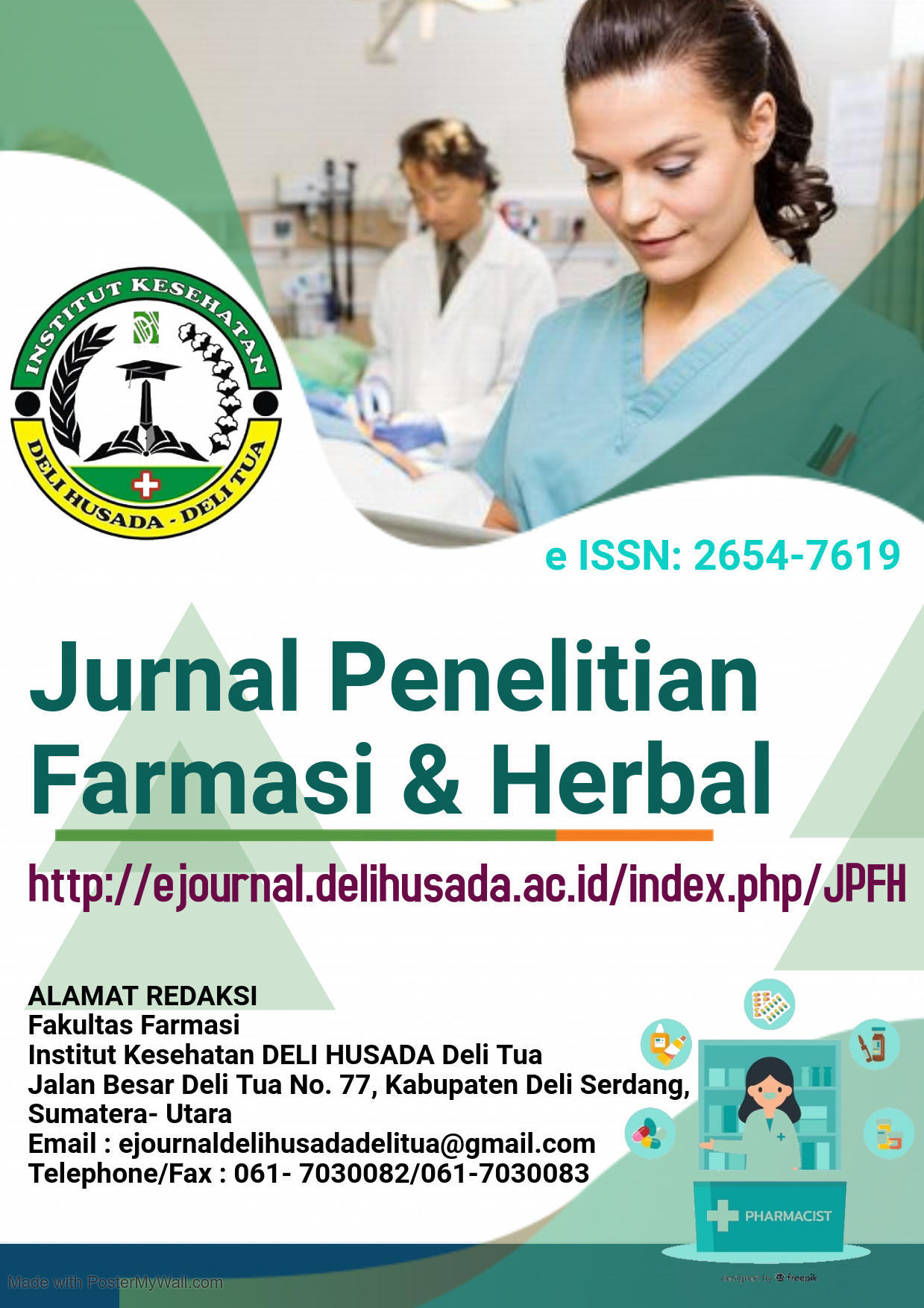UJI AKTIVITAS EKSTRAK BUAH ARA (Ficus carica Linn) TERHADAP TIKUS YANG DI INDUKSI ALOKSAN
UJI AKTIVITAS EKSTRAK BUAH ARA (Ficus carica Linn) TERHADAP TIKUS YANG DI INDUKSI ALOKSAN
Abstract
Diabetes is a disease in which the blood sugar level rises above the normal level. When blood sugar levels are regulated by the hormone insulin produced by the pancreas. The fig fruit (Ficus carica Linn) is a plant that is thought to be used as an herbal remedy in the management of diabetes. Contains flavonoids which are thought to have potential as antidiabetic. Flavonoid mechanism in reducing blood glucose levels is to reduce glucose absorption and increase insulin secretion. Flavonoids are phenol compounds that have several pharmacological activities. Objective knowing antidiabetic activity of fig extract (Ficus carica Linn) against mice induced by alloxan. The process used is a 70% ethanol solvent immersion process. This study method is designed before and after the control group. Fifteen rats were divided into 5 treatment groups. 1 (negative control) received the CMC Na 1% group, 2 (positive control) received glibenclamide 0.09 mg / kgBB, 3, 4 and 5 received 9 mg / kgBB, 18 mg / kgBB, and 36 mg / kg. The fig extract was administered at a dose of kgBB. Previously, rats were given alloxan 125 mg / kg BB intraperitoneally for 3 days and mice with a blood glucose level of ± 200 mg / dL were used in this study. The results of this study showed that glibenclamide 0,09 mg/kgBB and fig extract dose 36 mg/kgBB could reduce the best glucose levels for seven days. Conclusion the best glibenclamid as antidiabetic in male white rats induced by alloxan and fig extract at a dose of 36 mg/kgBB 1,5% concentration is good as antidiabetic mellitus in male white mice induced by alloxan.
Downloads
References
Brachmacari, G. 2011. Bio Flavonoids With Promising Antidiabetic Potentials A Critical Survey. Research Signpost.
187-212.
Tandra, Hans. (2013). Life Healthy With Diabetes. Hal: 6-7. Yogyakarta.
Oktharisa, Pamella. (2014). Kandungan Gizi Buah Tin (Ficus carica Linn) Produksi Indonesia. Dapartemen Gizi Masyarakat Fakultas Ekologi Manusia, Institut Pertanian Bogor. Hal: 19. Bogor.
Sobir PHD & Amalya, Mega. (2013). Tanaman Buah Koleksi Eksklusif. Penebar Swadaya. Jakarta. Hal:
215-221.







